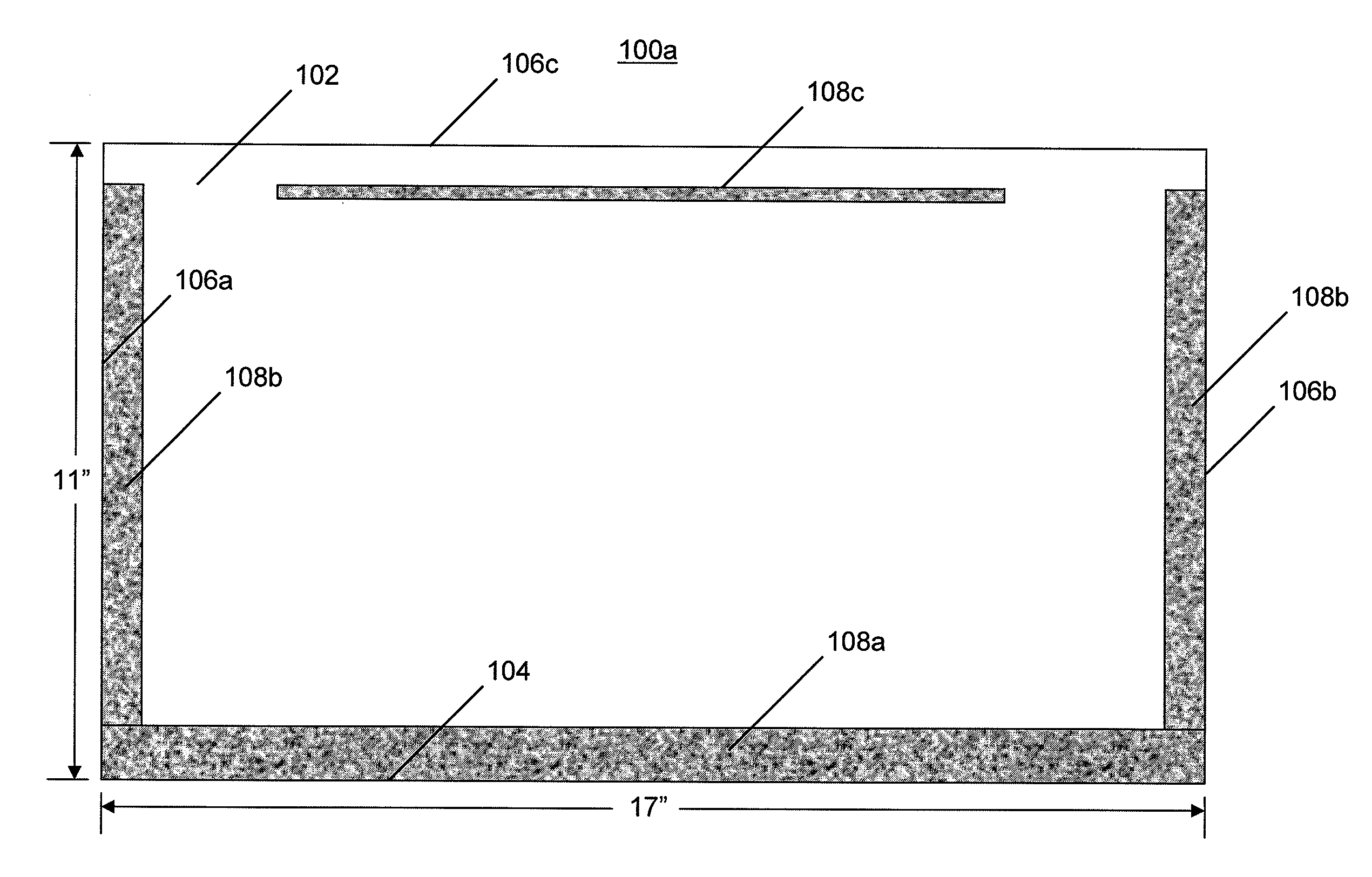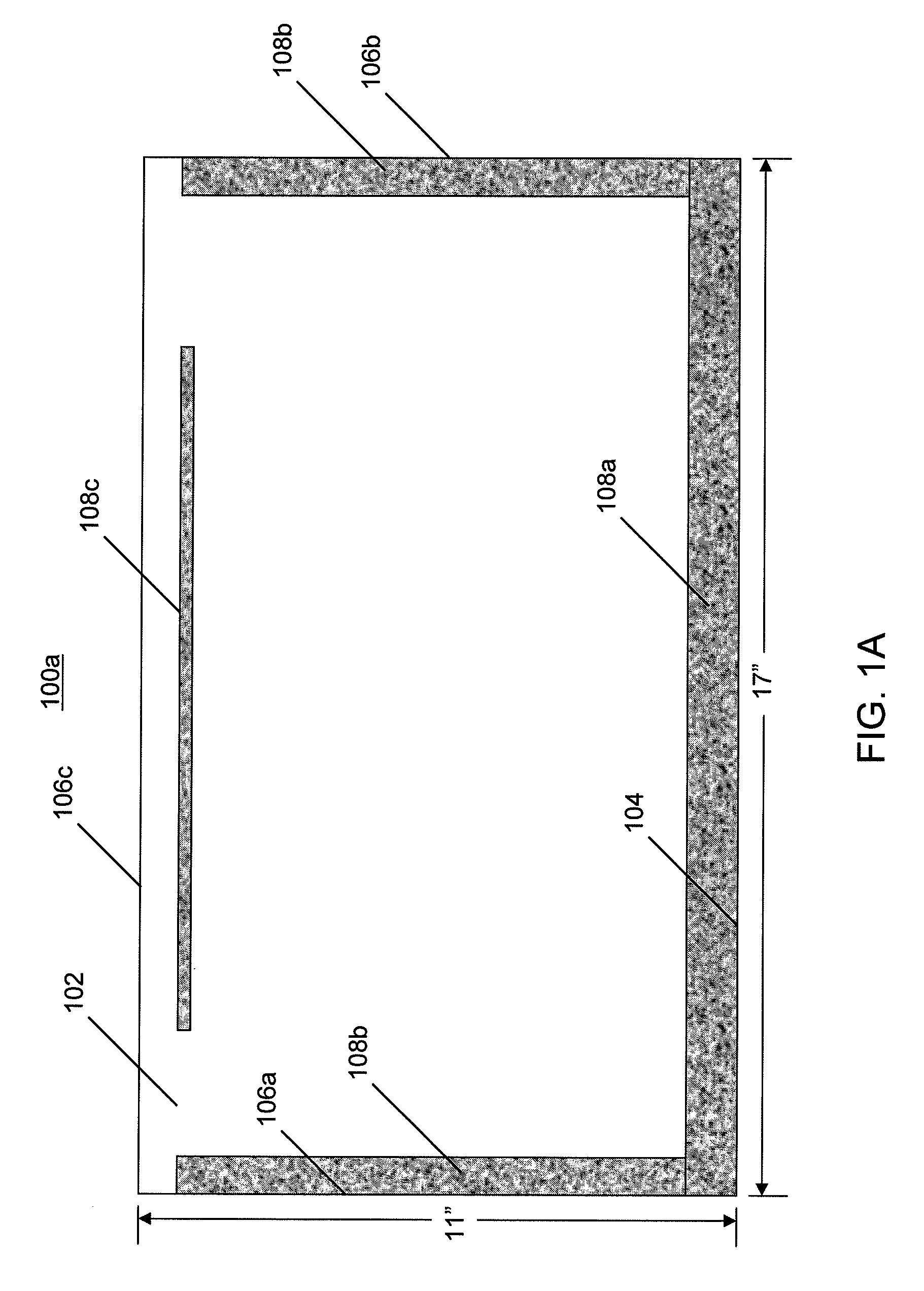Device for surface masking
a technology for masking surfaces and devices, applied in the direction of spraying apparatus, liquid surface applicator, coating, etc., can solve the problems of large installation time and effort, large effort and effort, and the majority of masking materials are not usable for protection of another surface, etc., to achieve the effect of reducing length, extending masking area coverage, and reducing thickness
- Summary
- Abstract
- Description
- Claims
- Application Information
AI Technical Summary
Benefits of technology
Problems solved by technology
Method used
Image
Examples
Embodiment Construction
[0038]The present invention will now be described more fully in detail with reference to the accompanying drawings, in which the preferred embodiments of the invention are shown. This invention should not, however, be construed as limited to the embodiments set forth herein; rather, they are provided so that this disclosure will be thorough and complete and will fully convey the scope of the invention to those skilled in the art. Like numbers refer to like elements throughout.
[0039]The present invention provides an improved system and method for surface masking involving a masking panel having at least one masking edge pre-fabricated to have a masking shape that substantially matches a desired masking boundary between a non-protected surface intended to have a substance (e.g., paint) applied to it and an adjacent protected surface intended to be masked so the substance will not be applied to it. The masking panel has sufficient rigidity to maintain the masking edge shape during inst...
PUM
 Login to View More
Login to View More Abstract
Description
Claims
Application Information
 Login to View More
Login to View More - R&D
- Intellectual Property
- Life Sciences
- Materials
- Tech Scout
- Unparalleled Data Quality
- Higher Quality Content
- 60% Fewer Hallucinations
Browse by: Latest US Patents, China's latest patents, Technical Efficacy Thesaurus, Application Domain, Technology Topic, Popular Technical Reports.
© 2025 PatSnap. All rights reserved.Legal|Privacy policy|Modern Slavery Act Transparency Statement|Sitemap|About US| Contact US: help@patsnap.com



